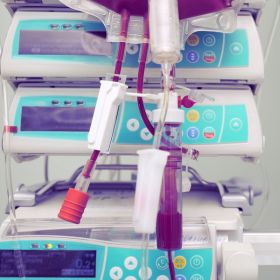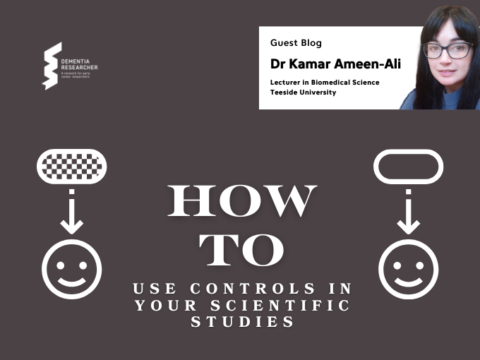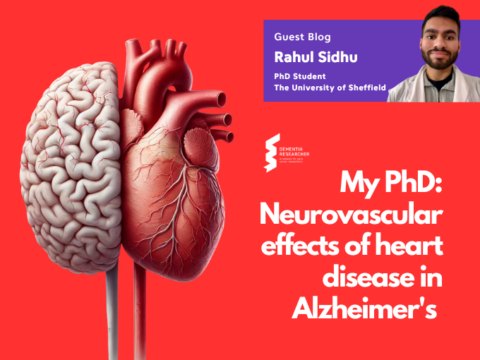Earlier this year, reports of the most recent milestone in the history of Alzheimer’s disease drug research hailed donanemab as a “game-changer”. As with previous antibody-based treatments, headlines described the results as the “beginning of the end” and a “turning point” in the search for a treatment to modify progression of the disease rather than targeting the symptoms. However, many dementia researchers have argued that reporting of results has been over-hyped, creating false hope for people living with dementia and their families. In this blog, I will unpack the findings of recent Alzheimer’s drug trials and try to determine whether they are the “game-changers” so desperately needed.
When results from a trial of the Alzheimer’s drug donanemab were shared at the Alzheimer’s Association International Conference in July earlier this year, I was facilitating a co-production focus group in York with people who had recently been diagnosed with dementia and their family members. As news of these trial results were shared by national media, members of my group asked me about what this would mean for them. This was a difficult position to be in, because whilst I wanted to be positive about progress in finding a disease modifying treatment, I know we had been here before, and many had argued that the language around reporting of trial results had been misleading and created false hope.
In 2021, after waiting decades for significant progress in developing an effective treatment for Alzheimer’s disease, aducanumab was approved by the US Food and Drug Administration (FDA). Aducanumab is an anti-amyloid-β (Aβ) antibody that targets Aβ aggregates and was halted during phase 3 trials two years previously. The FDA approval of aducanumab under its accelerated programme was based on a positive change on what is known as a “surrogate endpoint”; a significant reduction of Aβ rather than the effect on cognition. This approval was controversial, and the drug subsequently failed to achieve approval in Europe. However, it paved the way for other antibody-based treatments for Alzheimer’s disease.

Donanemab is given to patients intravenously, which means into a vein through a drip bag. It is an immunotherapy drug developed by a pharmaceutical company called Eli Lilly. Immunotherapy drugs are already used in medicine for treating different diseases, like cancers.
In January of this year, lecanemab was licenced for use in the US for people with mild cognitive impairment or early Alzheimer’s disease. This antibody-based treatment targets larger Aβ oligomers and, similarly to aducanumab, was approved through the FDA’s accelerated programme. This outcome divided dementia researchers, with many hailing this progress as the “beginning of the end”, whilst others questioned the degree to which the results were clinically meaningful; that is, whether it could result in a noticeable effect on an individual’s daily life.
For example, in the CLARITY AD phase 3 trial, the primary endpoint was the Clinical Dementia Rating Sum of Boxes (CDR-SB) scale, which is a semi-structured clinical interview designed to measure various cognitive and functional impairments, and where the higher the score, the greater level of impairment. After 18 months of treatment, lecanemab was reported to have reduced cognitive decline by 27% in people with mild cognitive impairment or early Alzheimer’s disease, compared to those who were administered a placebo.
This is a headline-grabbing statement which might mask the meaning behind the numbers. This reduction in cognitive decline represents an absolute difference of 0.45 points on the 18-point CDR-SB scale, which many have argued is not a clinically meaningful result. For this scale, previous research has suggested that a point difference of 0.98 would be needed for people with mild cognitive impairment, and 1.63 for people with mild Alzheimer’s disease, for a clinically meaningful difference to be achieved. Moreover, when data for men and women were looked at separately, it was reported that the point difference for women was only 0.20, and 0.73 for men. These results are still below what would be considered clinically meaningful, but perhaps is especially important to highlight considering we know that women are twice as likely to develop Alzheimer’s disease compared to men.
It is therefore not acceptable for an Alzheimer’s drug treatment to not only be questionable in relation to whether it will have a meaningful impact on the lives of people living with dementia, but for women to receive even less benefit despite being likely to be most affected.
Questions on efficacy aside, concerns have also been raised about the safety of antibody-based treatments.
In the CLARITY AD trial, 21% of those who received lecanemab experienced amyloid-related imaging abnormalities, such as oedema leading to brain swelling, or bleeding due to micro-haemorrhages. As such, many have concluded that despite now being licenced by the FDA, lecanemab is neither safe nor effective for people with Alzheimer’s disease.
Enter donanemab, another antibody-based treatment again targeting levels of amyloid in the brain. According to the results of TRAILBLAZER ALZ-2 presented earlier this year, donanemab slowed cognitive decline by 35% for patients with low-medium levels of tau, compared to those receiving a placebo. Between treatment and placebo groups there was a point difference of around 3 on the Integrated Alzheimer’s Disease Rating Scale (iADRS), a 144-point scale where the lower the score, the greater the impairment. This point difference represents roughly a 2-3% absolute difference between the groups, which again draws questions about whether the results are clinically meaningful. In addition, similarly to lecanemab, a number of patients in the trial experienced brain swelling and bleeding, so questions have again been drawn on both the efficacy and safety of another antibody-related Alzheimer’s treatment.
So what does this all mean for the future of dementia research, and the search to find a disease-modifying treatment for Alzheimer’s? There’s an estimated 55 million people worldwide currently affected by dementia, so there is a desperate need for a treatment approach for Alzheimer’s disease as the most common brain disease which causes dementia. Therapies need to target either the development of the disease, the progression of it, or both. Although significant progress has been made with antibody-based drug trials targeting amyloid, the use of hyperbolic language when reporting trial outcomes can lead to false hope and confusion, particularly when a number of dementia researchers don’t agree that targeting amyloid burden in the brain will be what it takes to move the needle.
Even if it was, the challenges around delivery of these new drugs may be too high for many global health systems, as they require patients to be identified early in the disease process, typically through expensive PET scans and CSF testing. Regular brain scans will be required to check for swelling and bleeding; risks associated with these types of drugs. All these challenges require investment and restructuring of current systems and practices.
There’s one final thing to consider. As a researcher working on the neuropathology of neurodegenerative disease, I know all too well how Alzheimer’s disease pathology is heterogenous, and rarely exists as a sole brain pathology. If Alzheimer’s disease can be identified as being the main disease pathology driving the clinical dementia syndrome in an individual for example, there are unanswered questions remaining about whether clearing the brain of that pathology could pave the way for the progression of a co-morbid pathology and further neurodegeneration associated with that. Therefore, we need to accelerate treatments targeting multiple disease mechanisms if we are to truly find a cure for dementia.

Dr Kamar Ameen-Ali
Author
Dr Kamar Ameen-Ali is a Lecturer in Biomedical Science at Teesside University & Affiliate Researcher at Glasgow University. In addition to teaching, Kamar is exploring how neuroinflammation following traumatic brain injury contributes to the progression of neurodegenerative diseases that lead to dementia. Having first pursued a career as an NHS Psychologist, Kamar went back to University in Durham to look at rodent behavioural tasks to completed her PhD, and then worked as a regional Programme Manager for NC3Rs.

 Print This Post
Print This Post




